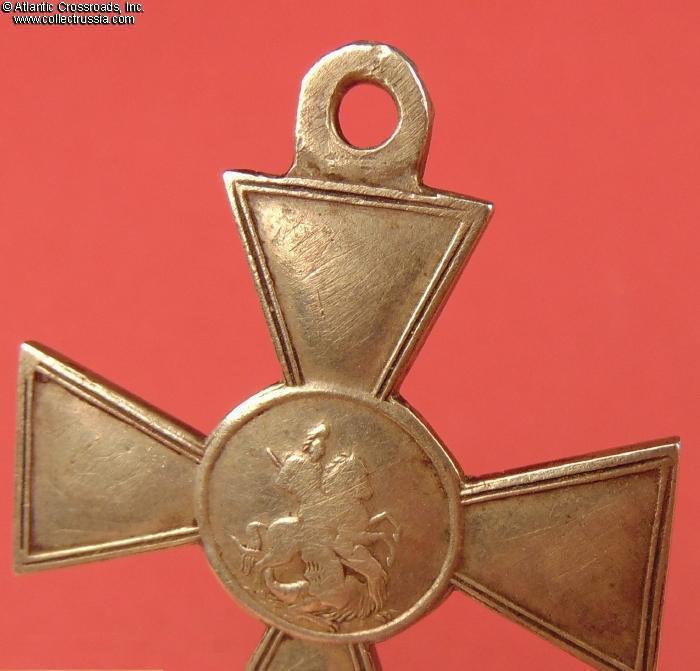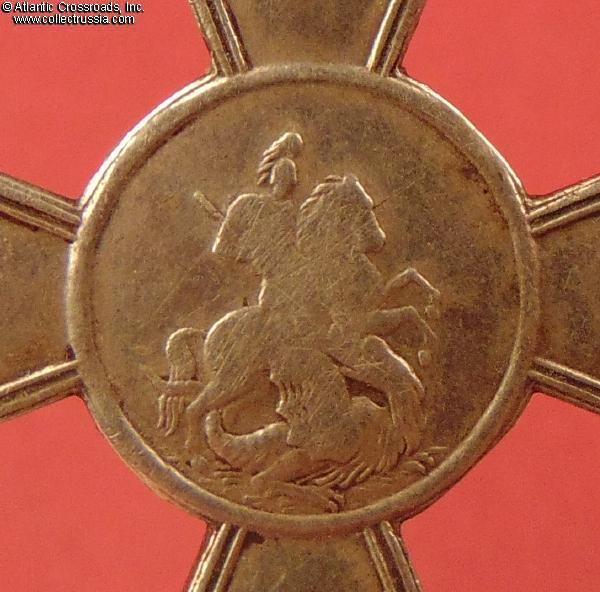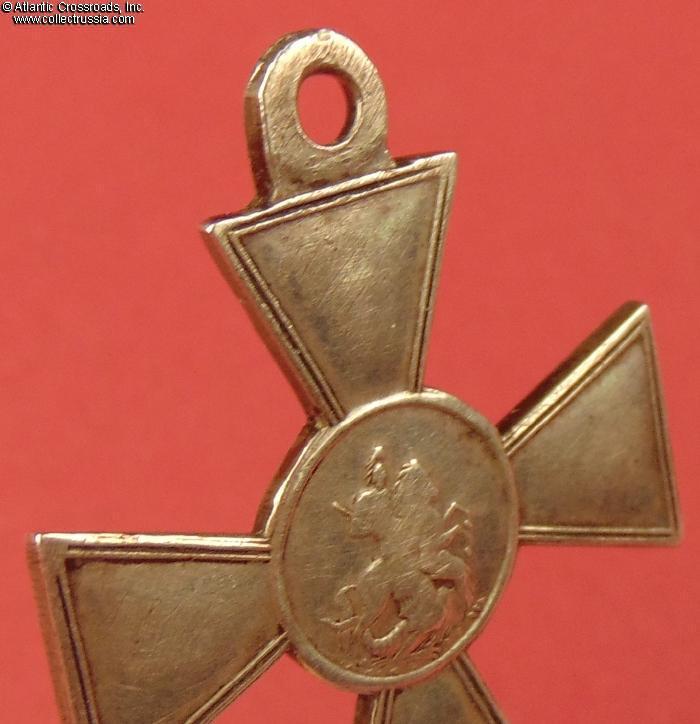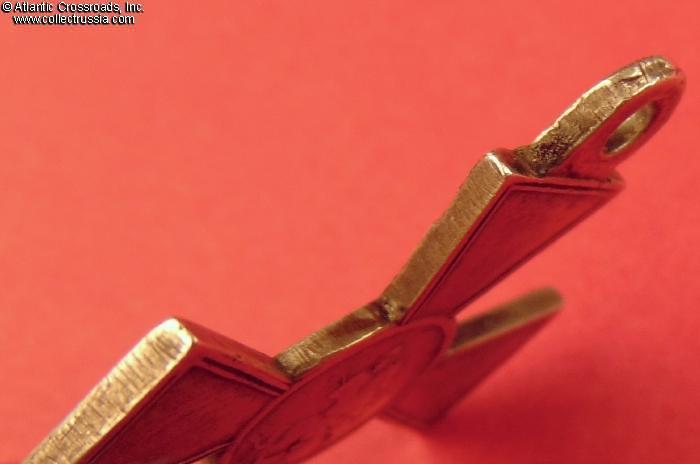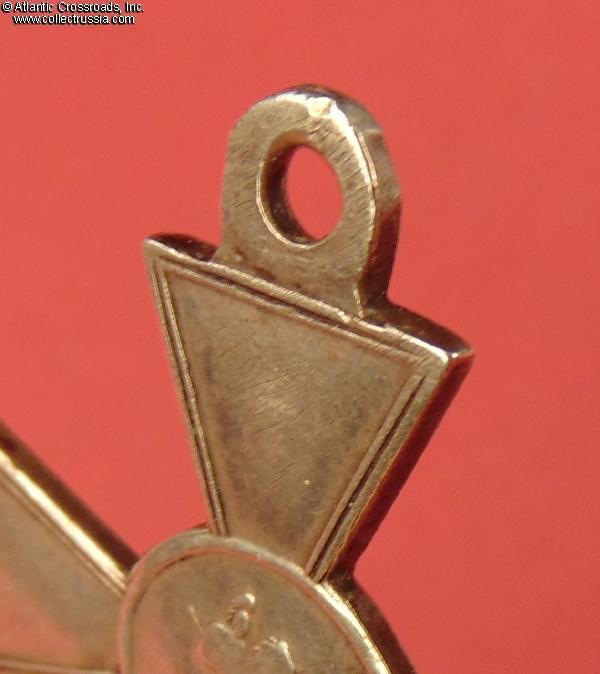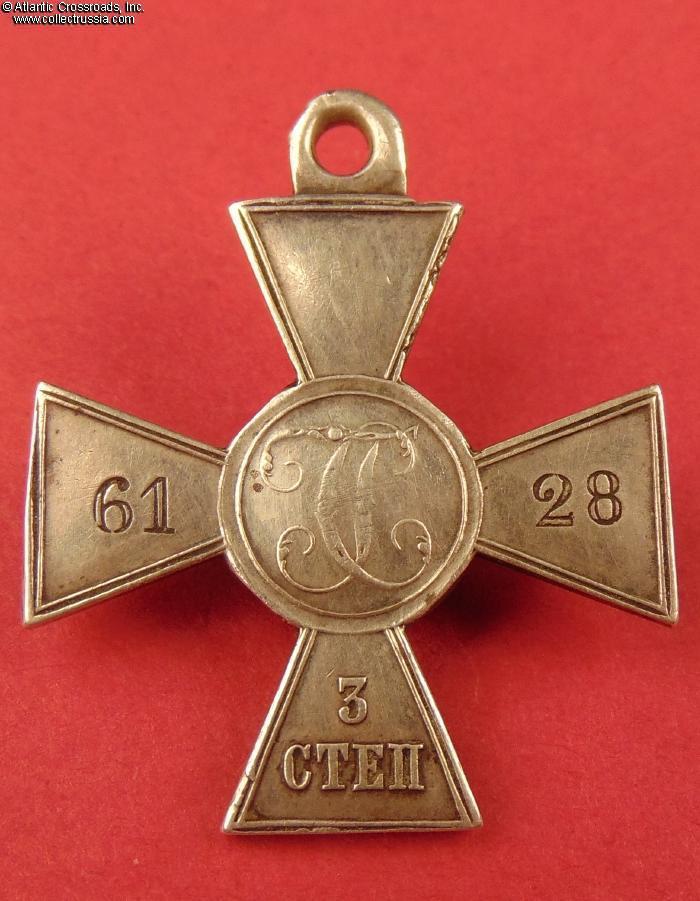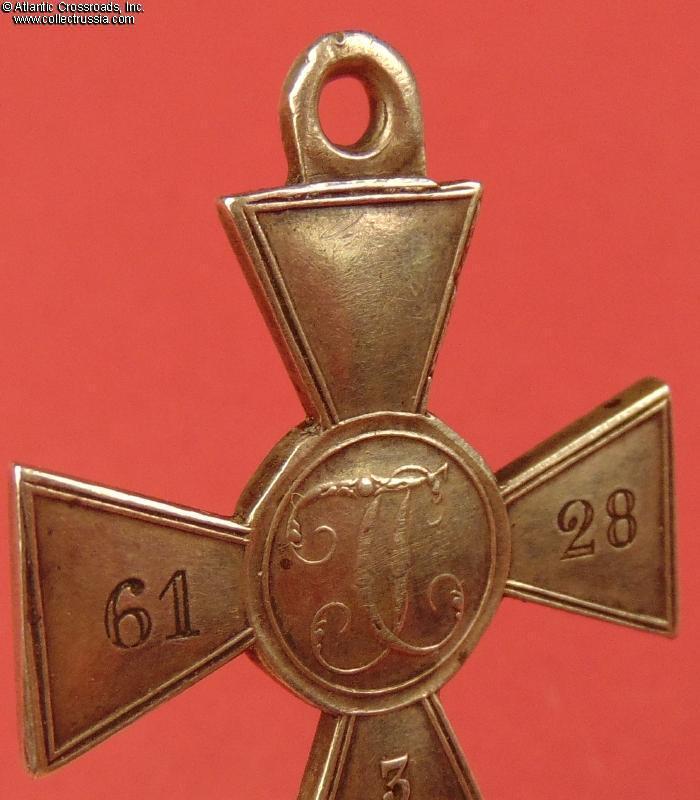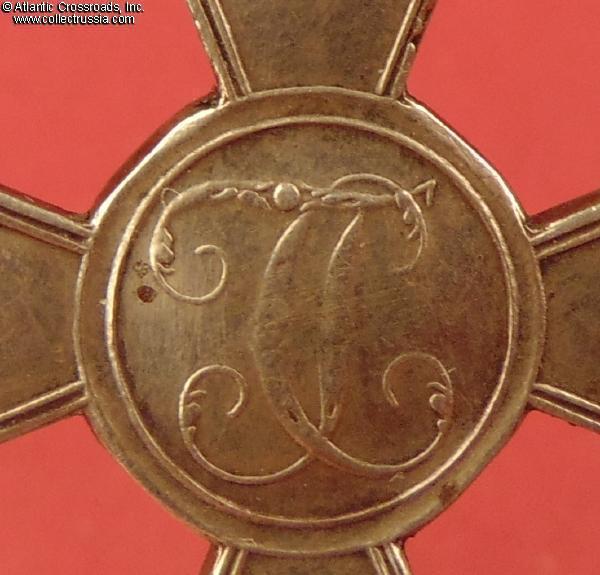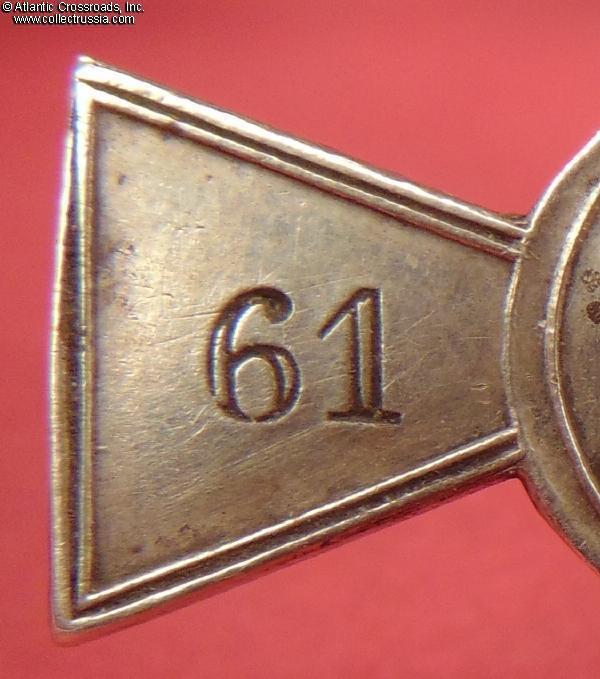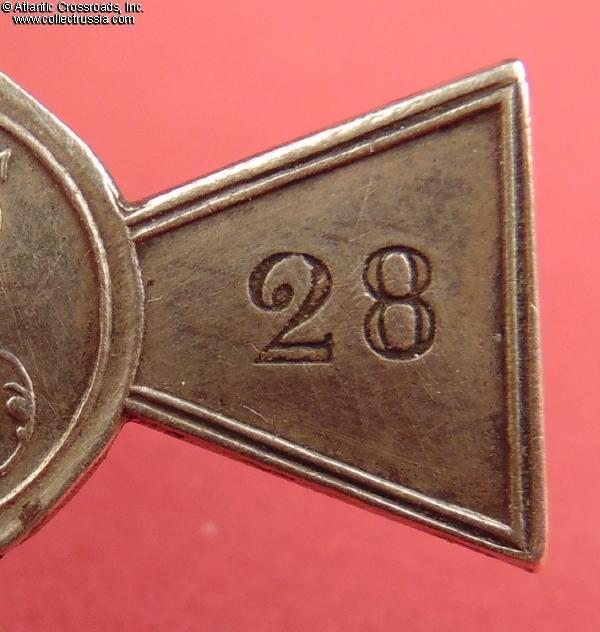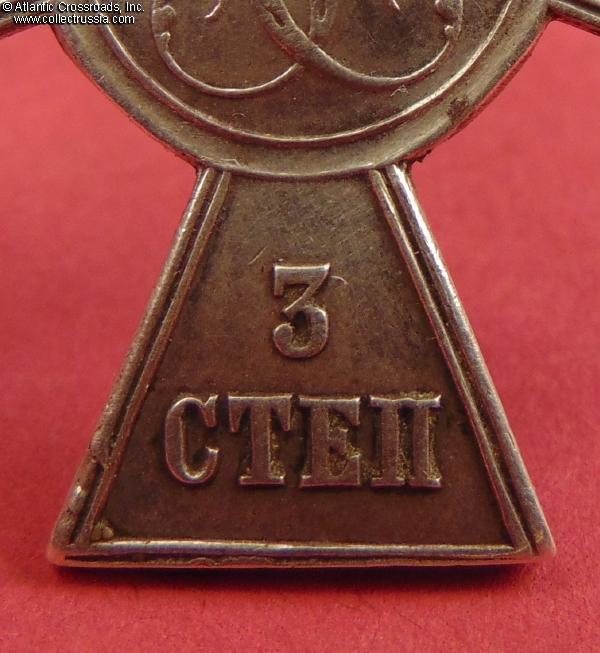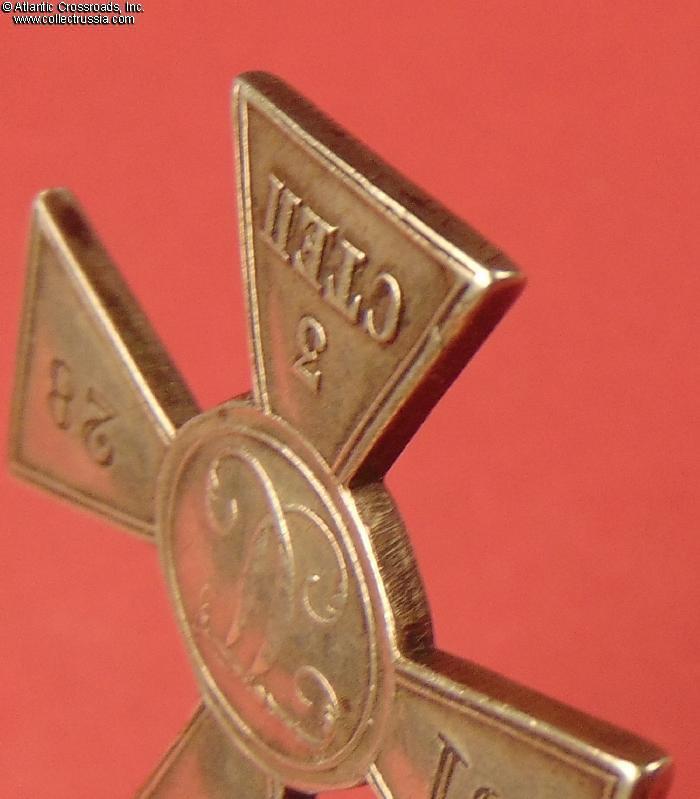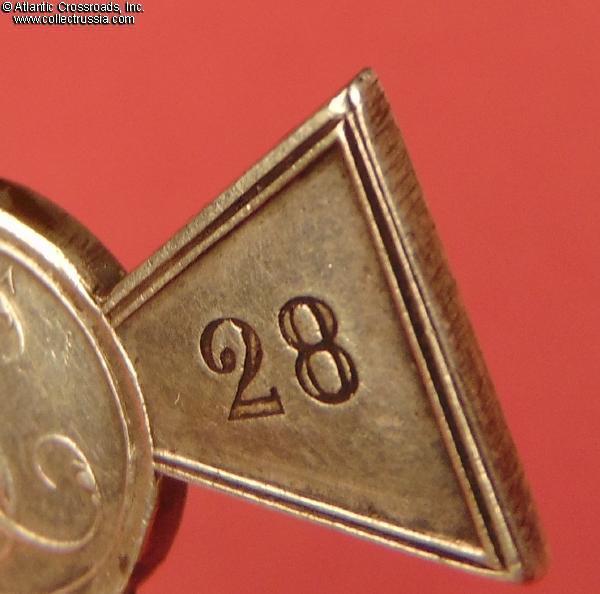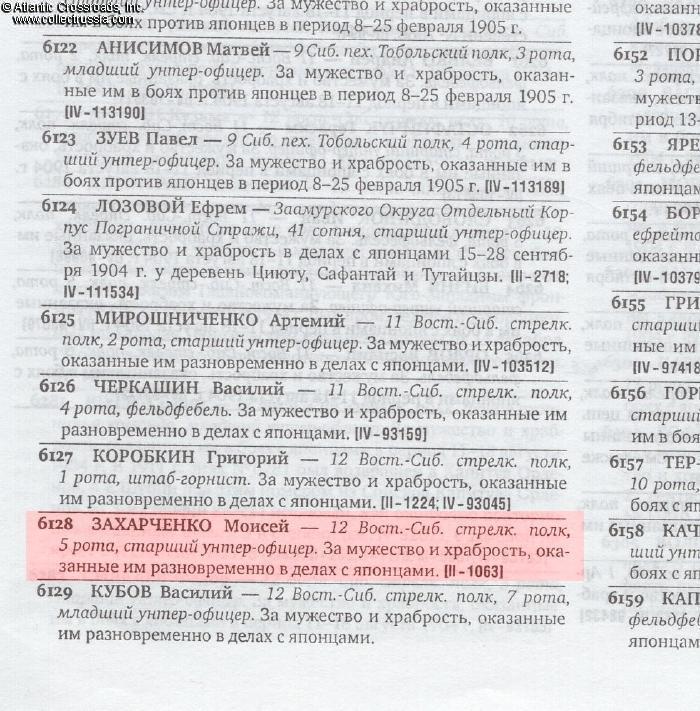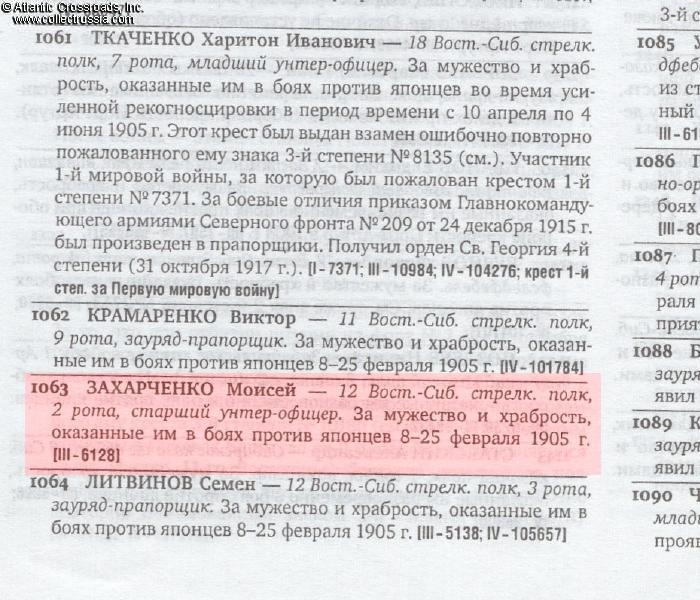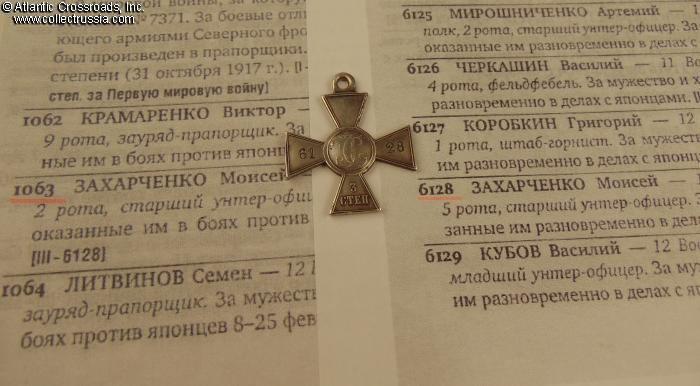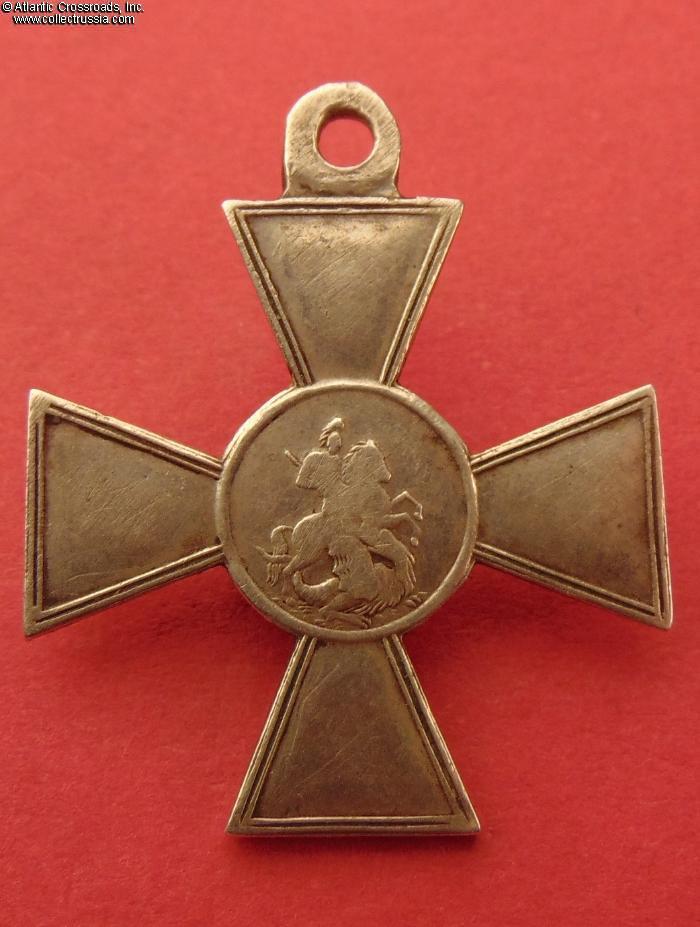
Badge of Distinction of the Military Order of St George, 3rd class, #6128, awarded to Senior Warrant Officer Moisey Zakharchenko, 12th East Siberian Rifle Regiment, 1st Manchurian Army, for the Russo-Japanese War of 1904-1905.
In silver; measures 40.4 mm in height incl. eyelet, 34.3 mm in width; weighs 10.3 g. This piece is of the distinct early type featuring a U- shaped eyelet. The font of the serial number is also in the early style, which is particularly noticeable in the digit "2". In all respects aside from its higher serial number
In silver; measures 40.4 mm in height incl. eyelet, 34.3 mm in width; weighs 10.3 g. This piece is of the distinct early type featuring a U- shaped eyelet. The font of the serial number is also in the early style, which is particularly noticeable in the digit "2". In all respects aside from its higher serial number, it is identical to the awards for earlier campaigns such as the conquest of the Caucasus or the Russo- Turkish War of 1877-78. Only a small minority of the crosses for the Russo-Japanese War were of this early, or as they are called by the Russian collectors, "Turkish" style.
In very fine condition. There are some thin polishing marks throughout from cleaning, barely noticeable to the unaided eye; although they affect the highest points of the artwork on both sides of the center medallion, the details of both the obverse with St. George slaying the dragon and the cypher on the reverse are well-defined. Besides the evidence of cleaning, the arms are free of significant wear; the raised borders of the center medallion and arms are perfect. There is a nice attractive even toning to silver on both sides. Overall, a well- preserved and attractive piece.
Sr. Warrant Officer (Starshiy Unter-Ofitzer) Moisey Zakharchenko repeatedly distinguished himself in combat during the Russo-Japanese War while serving in the 5th Battalion of the 12th East Siberian Rifle Regiment of His Imperial Highness Crown Prince (Naslednik Tsesarevich). Although we have not yet found information on his St. George 4th class award, it might have been earned during the early part of the same conflict or possibly even earlier, in border skirmishes along the Russian Far Eastern frontier, defense of the Russian enclave of Harbin in Manchuria, or the relief of the foreign legations in Peking (Beijing) during the Boxer Rebellion. Indeed, his regiment greatly distinguished itself prior to the Russo-Japanese War: in 1900, it saw actions in Tianjin and Pekin. Notably, one of the officers of the unit was awarded with an "officer's" Order of St. George, 4th cl. for bravery in the storming of the Taku (Dagu) Forts near Tianjin in June 1900; another one was decorated with the same for being the first with his company to scale the steep earthen wall of the Tianjin Eastern Arsenal. Three years later, the regiment was issued an honorary St. George banner in recognition of its outstanding performance during the Boxer campaign.
In 1904-05, the 12th East Siberian Rifle Regiment took part in the Russo-Japanese War as a part of the 3rd Eastern Siberian Rifle Division, Manchurian Army. It distinguished itself in some of the early battles of the war, in particular the first major land engagement that took place on 30 May - 1 April 1904 on the Yalu River near the settlement of Tzulyanchen (Tyurunchen in Russian transcription of the time) and in the massive Battle of Liaoyang (Lyaoyan) in late August - early September 1904. Both battles ended in defeat for the Russian Army, but the regiment fought so well that its servicemen were subsequently given special honorific scrolls to wear on their full-dress headgear, one "For Tyurunchen, 17-18 April 1904" and "For Lyaoyan, 16, 17 and 18 August 1904" (note that the dates are according to the old Julian calendar used in Russia prior to the 1917 Revolution.) During the Russo-Japanese War, the regiment was also given the honorific title of the (own regiment) of His Imperial Highness Crown Prince (Naslednik Tsesarevich).
The Badge of Distinction of the Military Order of St. George, 3rd cl. was bestowed upon Zakharchenko as a cumulative award in recognition of his "valor and bravery shown on different occasions in actions against the Japanese". Interestingly, he also earned the St. George 2nd class (#1063) during the same conflict, awarded for "bravery and valor in combat with the Japanese on 8-25 February 1905" (the dates are 21 February - 10 March 1905 according to the modern calendar.) This latter award was clearly for the Battle of Mukden, the last major land battle of the war which, followed by the Russian disaster at Tsushima, forced the Russian government to sue for peace.
Any St. George award from the Russo-Japanese war above the lowest 4th class is an uncommon find, but it is even more so for the 3rd class of
the early, "Turkish War" type. It is extremely rare to see one issued to a real war hero who was awarded with not just two, but three early
Badges of Distinction of the Order of St. George!
$3,800.00 Add to cart

